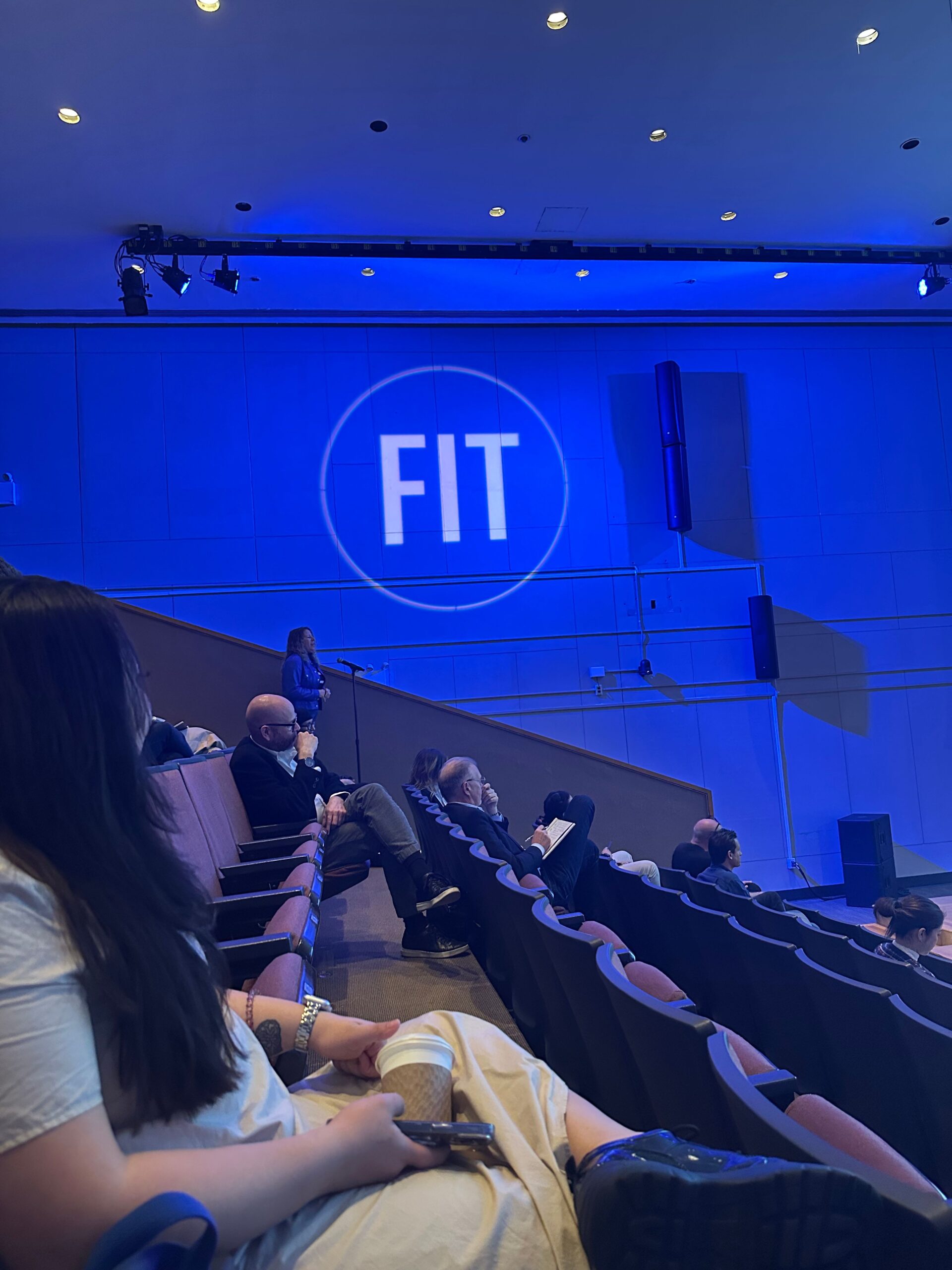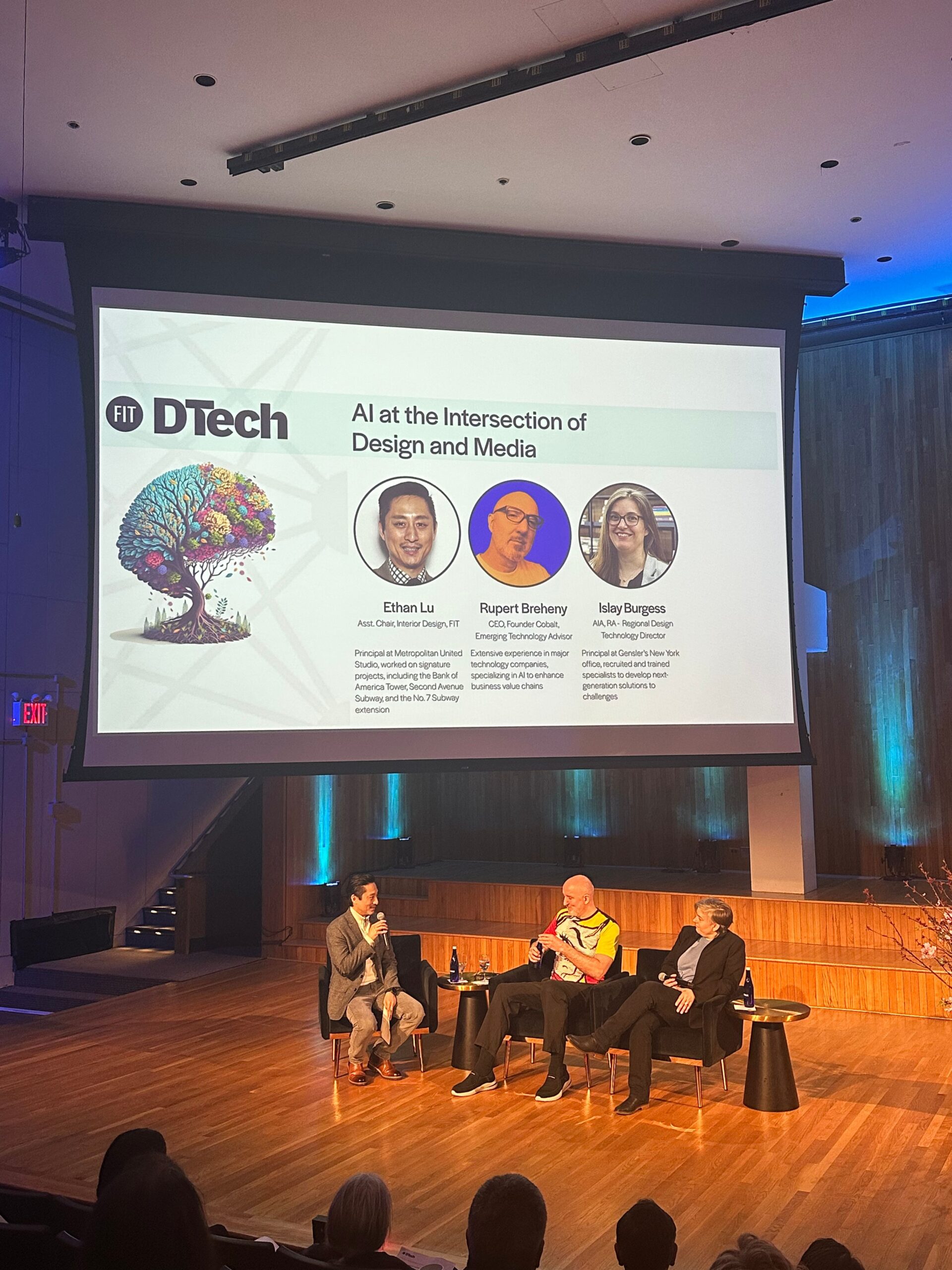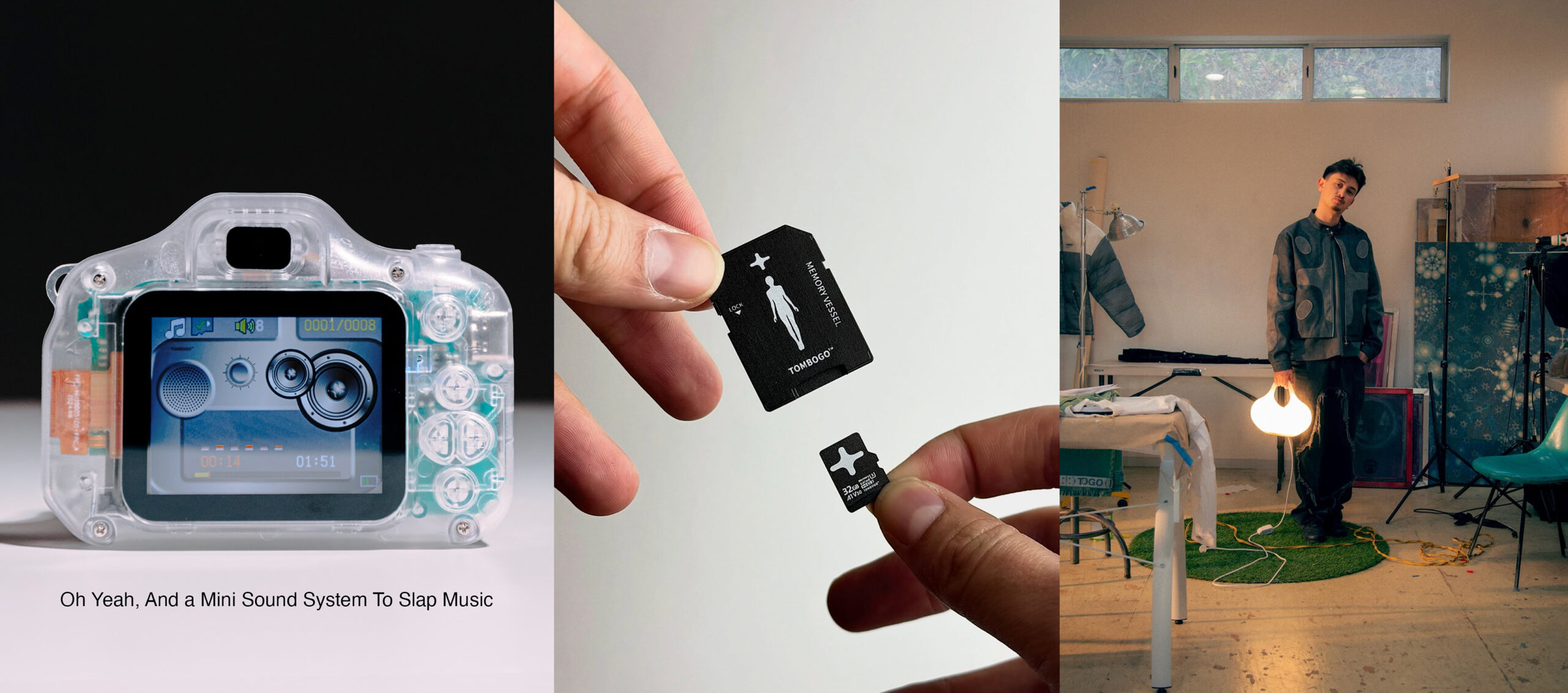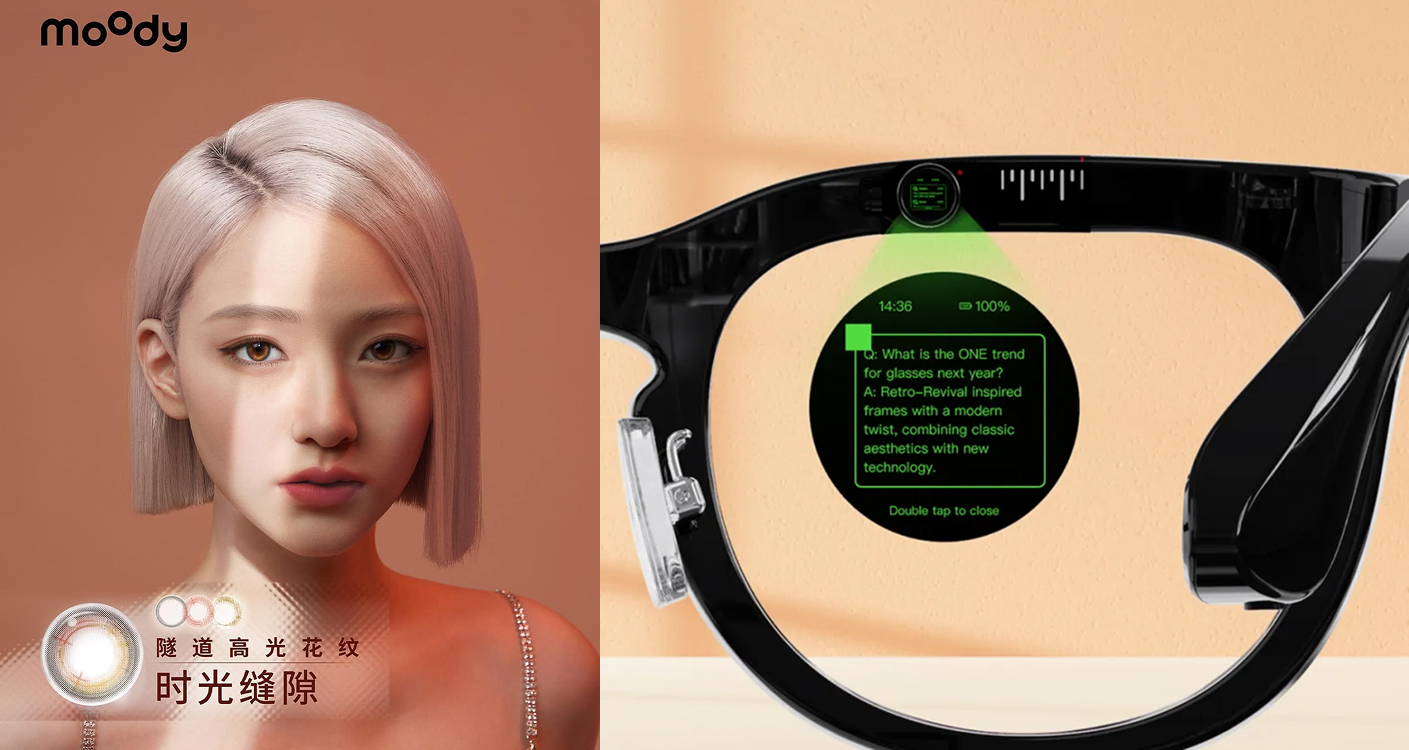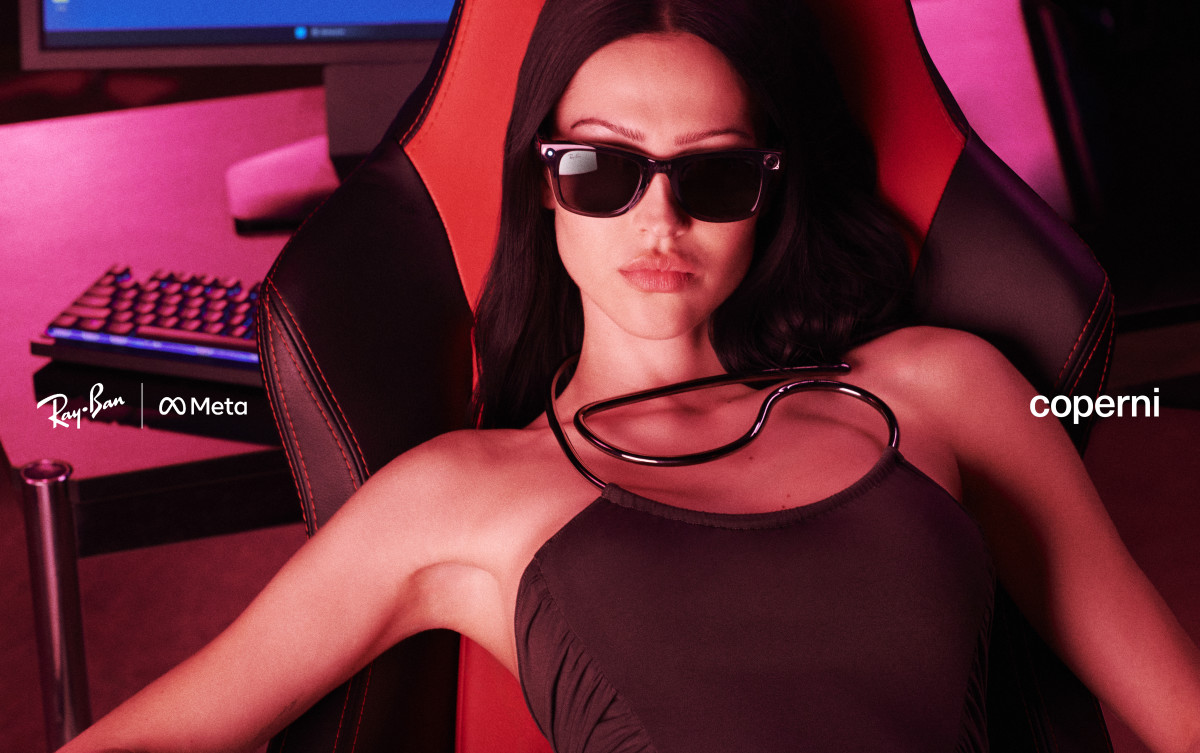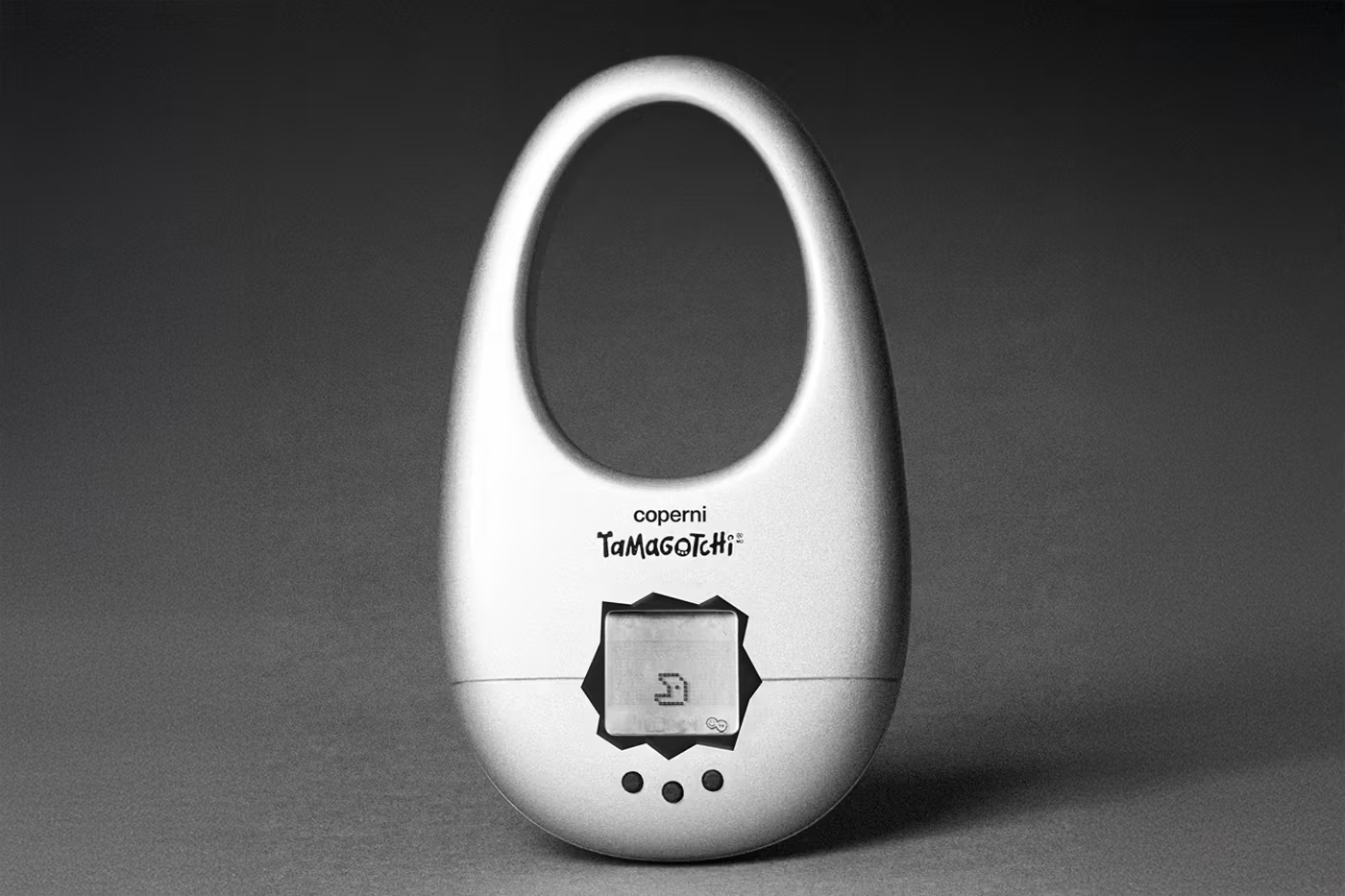There’s a surge in the use of artificial intelligence, augmented reality, biometrics, and facial recognition technologies among many retail brands for optimizing the interactions between companies and shoppers. The result of using these technological tools does not only benefit shoppers to have a better and efficient experience, but it also help companies to develop more sustainably.
Polyform Studio is the driving force behind innovative interaction designs in the form of mobile app, AR, and hardware & IoT. They help startups and world’s top-tier brands such as Lululemon, Uniqlo and Coca Cola with strategy, design and development with the Three Spheres of Sustainability mindset.
We sat down with Adam Wilson, the co-founder of Polyform and discussed how Polyform is contributing to retail ecosystem by helping companies design and maintain their applications in accordance with sustainability standards. And in the last section, we will dive deeper into how Wilson is intertwining his insights on the interactions between shoppers and data for their new fashion project SKINNER.
Read our chat below.
Between dreams and execution
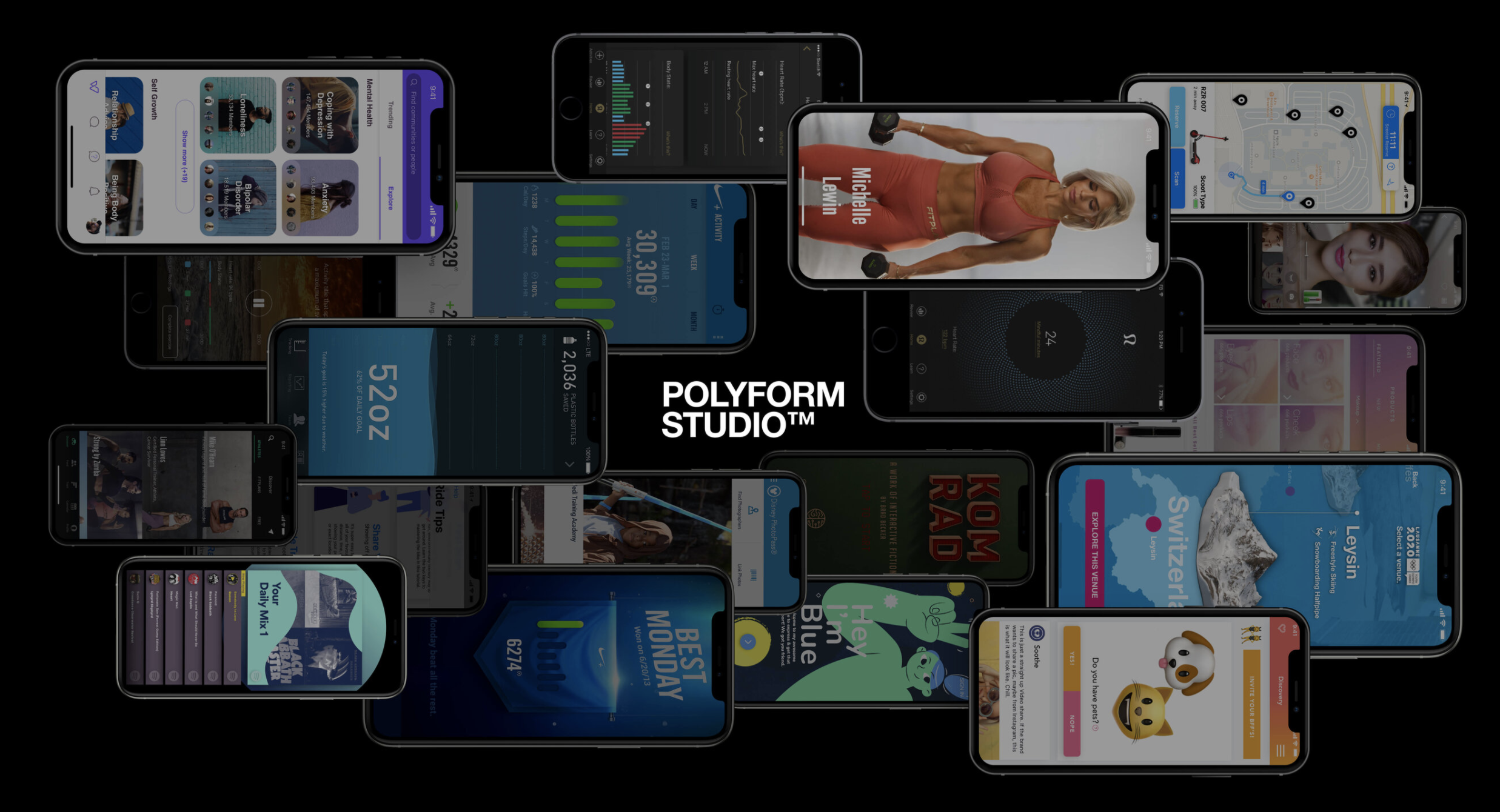
What’s your background?
AW: My background is in industrial design. I had actually been designing physical products before I got into digital. I majored in sustainability when I was in university. It’s something that’s really important to me, and the two other founders. And we are just really passionate about sustainability in general, the three pillars economic, social, environmental.
We do a TOMS style, one to one for every big corporate client. We have clients like Coke and Verizon, and we also do work for nonprofit. We recently worked with these guys called Live for tomorrow. They’re disrupting the Suicide Prevention hotline space.
That’s just an example of how we practice what we preach on the sustainability side. It’s more about an ethical environment, ethical workforce all helping the corporates to be green in some ways.
I think the responsibility for a sustainable future can only be on the shoulders of the people building the future designers, it’s up to us to do it.
Why did Polyform choose the crossover of hard tech, mobile, and AR?
Adam Wilson (AW): When the iPhone came out, I went into the digital world and have been working in mobile ever since. I’ve always had an IoT background and with my previous studio, Momentus, we would ship between 5 and 8 IoT projects a year. I’m also a co-founder at Virtual Vision, a sister company to Polyform, that designs and manufactures hardware for retail and in-store experiences.
Can you tell us more about Polyform’s vision and mission?
AW: The mission and vision for the design studio part of Polyform is that we help great ideas become great startups and help great startups change the world. Our mission is to help organizations expand their positive impact on the world from a sustainability point of view. There are so many great companies doing great things, often the only thing standing between their success and failure is great product design and product planning, and that’s what we do best.”
As a company, we’re really passionate about finding startups that are in the moments of their startup journey when they need design help the most, then we make sure that they get it.
Interactions between consumers and retail experiences
Wilson has been working with retailers since 2012 in a variety of different capacities, from in-store tech to retail companies that want to make a tech product. he was also on the original Nike+ FuelBand team that was the first mass-market wearable ever made….
With so much experience in the fashion tech industry, do you think that the fashion consumers’ UI/UX behavior has changed over the years?
AW: I think technology has gone through this transition where 10 years ago retailers were using it either for marketing or to improve the efficiency of some system. It wasn’t really speaking to the customers yet. There was not a lot of UI/UX for the customers to engage with. People weren’t selling online as much as they are now.
Over time retailers, especially the ones in the lower to mid-end price range, have started to understand that bringing technology into the stores as part of customer experience has huge benefits. UI/UX behavior for shoppers in e-com has changed. People are happy to buy things online now. People are happy to view, especially hard goods in augmented reality as a way of trying before they buy. Many retailers are starting to have AR experiences.
What are some benchmarks for you to know whether a product design is efficient?
AW: There are all kinds of benchmarks all along the way. Whether conversion from a category page to a product page, conversion from the product page to the card conversion, or from a card to a purchase.
It’s all about AR right now. And AR still sucks unless you’re doing watches, hats, glasses, or shoes. They’re getting better with jewelery and outerwear, but it’s still not there yet.
Viewing in AR is a great indicator of interest and definitely improves conversion overall. Vessi did it and saw their sales shoot up. Shopify did a really great report on this recently and found that conversion off an AR view was more than 200% than those who didn’t view in AR.
We’ve done some stuff where we’ll do a volumetric capture of a model wearing the garments then you might see them walk through your living room with it. Or you can select from a variety of different body type models and see it in your living room at scale. And all those use cases have the same kind of increase to conversion.
Jewelry is a little harder because of the transparency of the diamonds. We’ve done work with Zales and with all these different retailers or jewelers as well. AR is definitely changing everything.
Interactions between consumer data and sustainability
How do you think customer data and preferences gathered in AR apps can help fashion corporations reduce environmental pollution?
AW: When retailers are collecting customer data regarding their choices and preferences, it allows the brands to relate customer-centric products. This ensures that you are only creating products that would easily become popular with your niche. And so it would reduce the mass production of clothing items and accessories that usually go to waste because they have no demand. Also, when customers are purchasing through AR apps, they are getting an exact fit for their measurements, which reduces returns and ultimately the pollution caused by logistics.
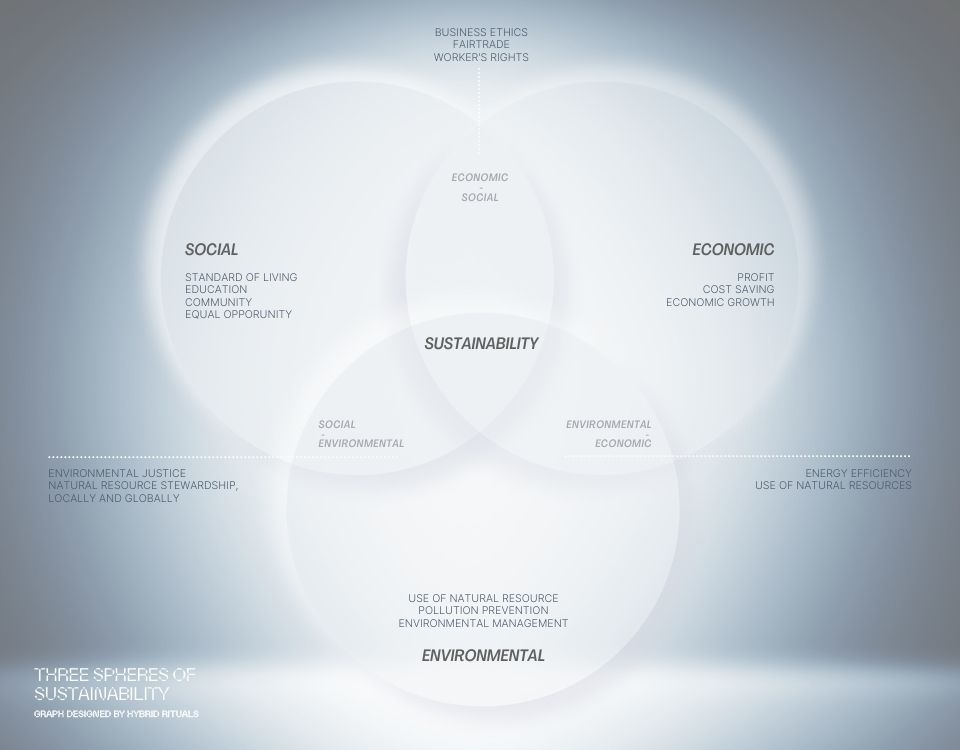
How do you incorporate sustainability factors into your UI/UX designs?
AW: If it’s a purely digital product, there’s only so much you can do to reduce your impact. From an environmental standpoint, it’s stuff like carbon offsetting.
For materials and hardware, we recommend choosing supply chains that are sustainability certified.
From the social side, we make sure that the startups are hiring a diverse group of individuals, so there is diversity in thought. Beyond that, making sure that everyone is getting compensated correctly, even when leveraging overseas talent pools who are traditionally taken advantage of.
I don’t think that sustainability is just environmental. It’s also about the sustainability of the company. So our exit strategy (with the client) includes helping them hire a team that will remain after us, helping the startup continue to thrive.
This includes everyone from product managers, UI/UX designers, and marketing people. So we are involved in the HR aspect of the startup too, making sure that the startup has the right people to run it.
Interactions between people and data privacy
Ai powered state + corporate surveillance weaponizes our identities. The SKINNER™ is a simple tool to defend yourself against the growing arsenal of tech being used against our privacy.
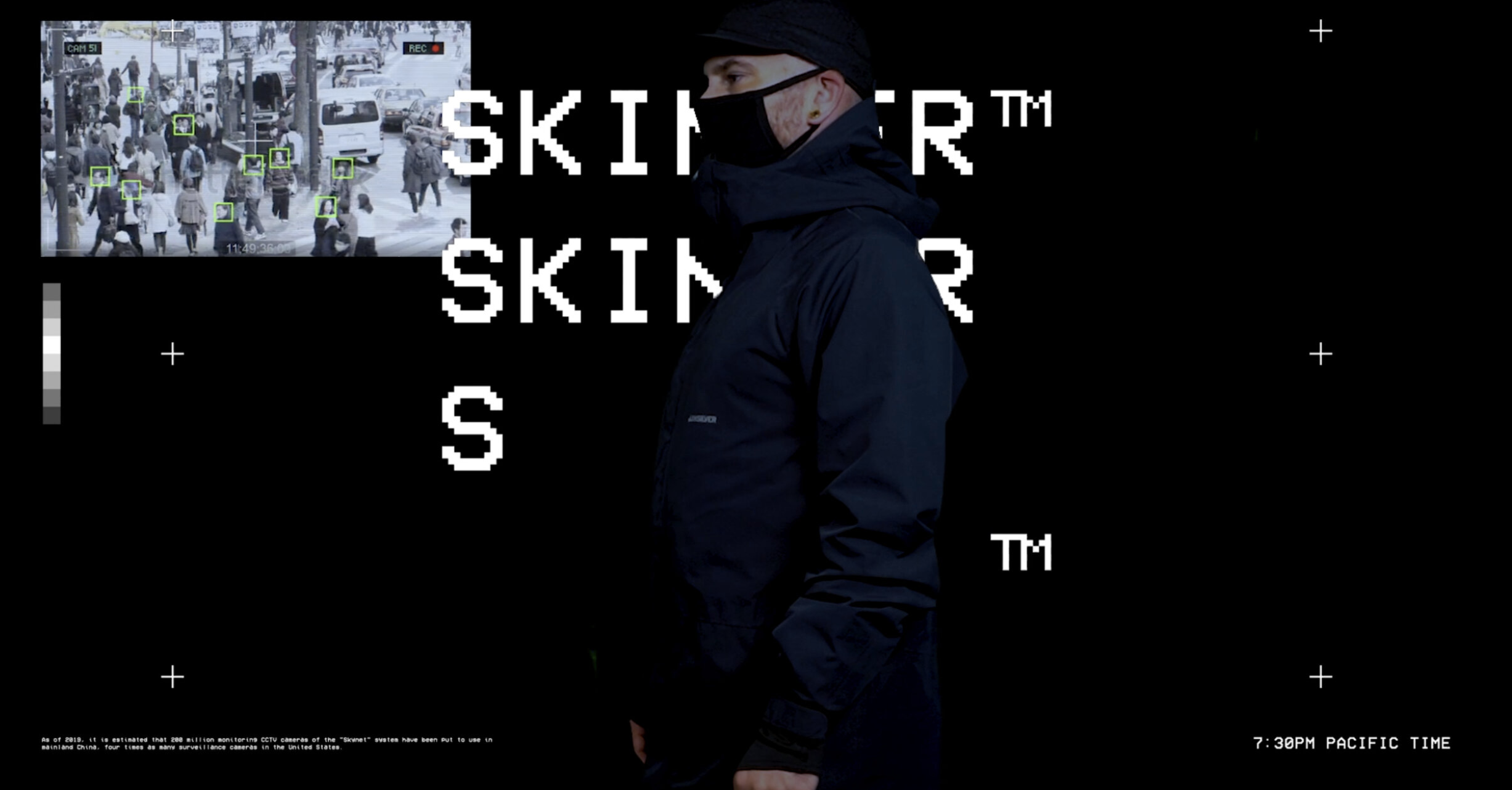
What are the downsides of our information being collected? Why do we need to physically protect our privacy?
AW: When a lot of people think about surveillance and their private information being collected, they think about things like Facebook marketing. I don’t think there’s anything wrong with that if somebody wants to more efficiently sell me what I’m already thinking about buying. In my mind, that’s a good thing.
The downside of information being collected is that you don’t always have control over how it is used. You have a choice to buy the thing Facebook advertises to you, but if you’re protesting, you don’t know how your face or phone scans will be used against you by the state. There are instances where protecting your privacy becomes a matter of life and death.
How do you protect your own privacy on a daily basis? Is there a special browser? Special password protections? No public profiles?
AW: This is the reason why I started SKINNER. I’m really shitty at protecting my own privacy. I use a password manager to have really strong passwords that you don’t have to remember. I have all public profiles with all my stuff out there. Anybody can look at it. I have nothing to hide.
Having worked with Nike on their first wearable tech, what’s the spin for SKINNER?
AW: SKINNER started as a design social commentary project. It was something that raises awareness and causes people to ask questions about how statewide surveillance or mass surveillance is in play in their lives. It was also a direct response to what we saw going on in Hong Kong and with the BLM protests.
Who are your target customers? How are sales so far?
AW: We never had a target market or a big plan. It achieved all the functions that we wanted it to. And we did the first round of 100 stocks, they sold out right away. And then everybody was interested to hear more. That’s when we decided to take a step back and think how can we make this something that’s manufacturable and at the same time not quite so adversarial. We wanted to make it a little bit more approachable for the everyday person. And this doesn’t necessarily need to be for somebody that’s on the front lines of some protests, throwing tear gas back at the police. It’s for someone who maybe just doesn’t want their phone ringing when they’re on a hike.
“SKINNER™ products undergo rigorous testing throughout the design process to ensure maximum functionality and durability.” It was mentioned on the site that the pro is subversive to mass surveillance…What kind of tests have you done? And how do you ensure these features really work?
AW: Our approach is quite experimental. We set up experiments and a bunch of KPIs to measure the performance. The end goal is to make sure it’s easier for people to just forget about how to protect your information and just wear the jacket and go.
A good example is there’s a pattern printed on the front of the hood that a local developer, who works in cybersecurity, developed. We worked with him around it. And what that does is it confuses 3D facial recognition algorithms. The algorithm can actually find your face, it basically creates a bunch of what the camera perceives different depths through the white and the black. And it’s not sure what is your face or what is just a pattern.
So, for that it was just all about printing in at different sizes, setting up these facial detection algorithms on cameras, seeing if it detects them or not. And basically, for everything, if it gets by the detection, 95% of the time, then we give it a checkmark.
And some of this stuff is very proven technology. The fabric we developed to blackout your phone, that’s just proven science. We don’t even need to test it. It just operates as it should.
Inauthentic replication or bootleg we’re not worries about because there is a LOT going on in this jacket that a usual fashion designer won’t know anything about. Our concern about bootlegs is that it’s ambiguous to the wearer if the tech is working or not. There’s no way for them to authenticate if it’s working against a “big brother” CCTV camera they walk by. They need some other way for them to know for sure they have a real SKINNER (whether it’s really working or it’s authentic.) That’s where the blockchain comes in. All future SKINNER’s will be authenticated on a blockchain and purchasable with crypto for an added layer of anonymous protection.
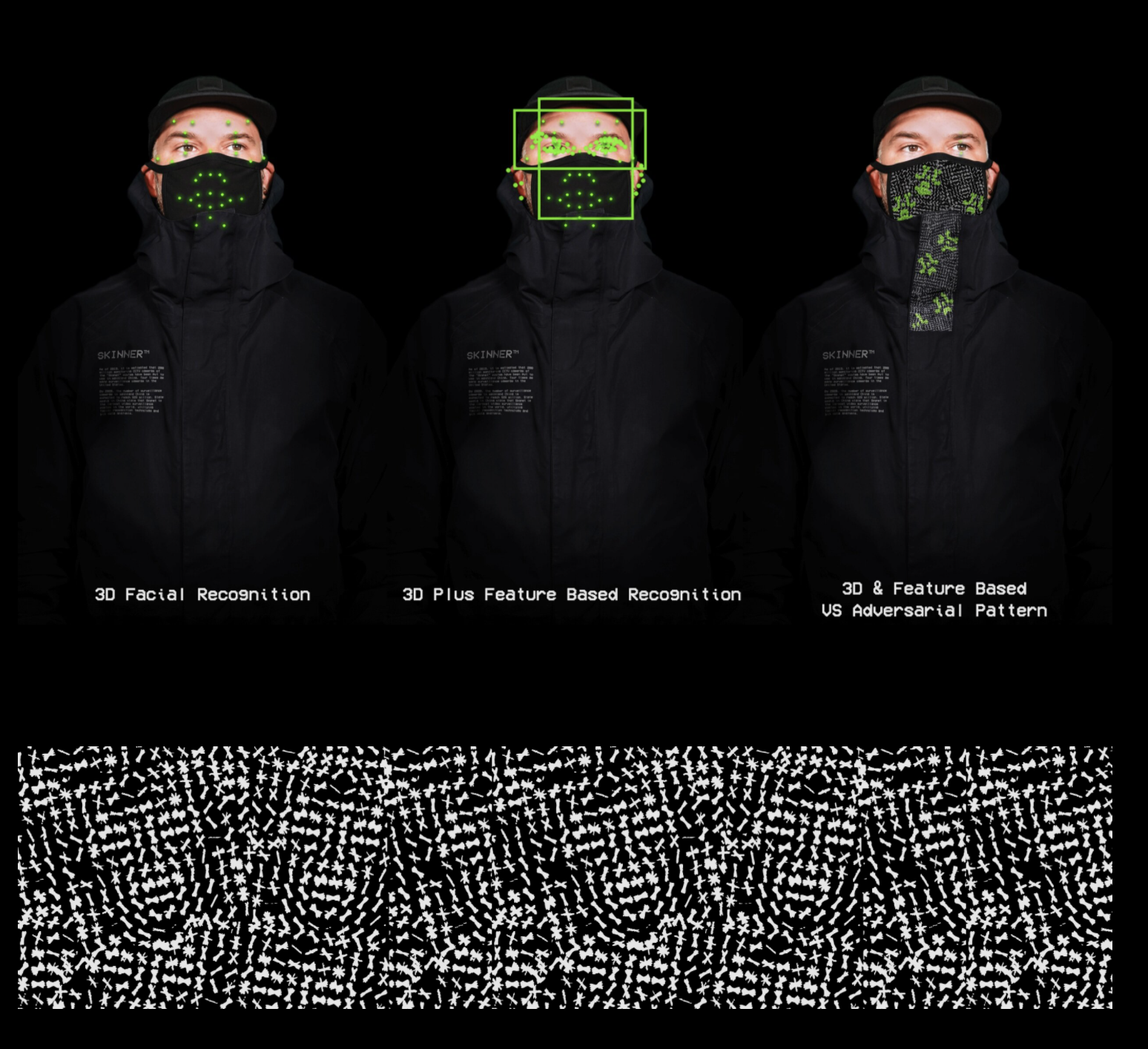
Can you tell us more about the patterns for anti-recognition?
AW: The main pattern we use is called “Adversarial Faces,” and it was created by Bruce McDonald, who’s local here in Vancouver. I read an article about him on this in the MIT Technology Review. So I reached out to him. I didn’t even know he lived here.
We have been experimenting with other similar patterns that do the same thing one called hyper face and a couple of others. And they were not as effective as his design. Bruce acts as a consultant at SKINNER. He works with us on the design team making the jacket.
Brands like Apple are scanning our faces. Recently Amazon announced that they can now read our palms for payment. Do you think efficiency can be solved with UI/UX design without losing our personal data?
AW: For one of our clients, we used visual sensors throughout the store that track what people look at and where they walk. It will even detect what they’re wearing, make an estimation of what tax bracket they’re in, and what age group they’re a part of. In some cases, the system even serves them customized marketing in the store based on what they think they want to see.
So, a guy like me, going up the escalator at one of these places. If there’s a TV at the top that is running ads and stuff, when I get to the top of the escalator, those ads are tailored directly to me, talking about items I may want to buy and stuff like this. It’s enhancing the shopping experience for sure. On both ends, I’m seeing more of what I came there to get as a shopper. And obviously, the retailers are selling more because they’re being more efficient and effective with their marketing.
And I think that’s just going to continue to grow. I think experiential retail is the future, and technology will be the cornerstone of that.
In China, they have caught many escaping criminals in one year with their surveillance system. There are also softwares like Palantir’s Gotham, which uses IR to find terrorists and plan for defense. Do you think if SKINNER got into the wrong hands, it could allow criminals to disguise their own identities?
AW: It’s not our job to police the morality of our customers. It’s a passive defensive wearable that isn’t going to help anybody do any offensive behaviors. I mean we also have knives and guns that are manufactured for our use. But you can’t blame knife and gun manufacturers if someone has decided to use these tools to commit crimes.
The thing is when you make a tool for defense it can also be used for offense, but that isn’t its intended purpose.
What about leaving a technological loophole for the officials in case if a criminal misused it?
AW: We’ve talked about that and looked at new versions of the jacket that can be authenticated on a blockchain and you won’t be able to buy them with fiat. You can only buy them as crypto. But I can’t say that we’d be tracking the jackets because that means we are working against our own mission here.
It’s a tough thing to come to terms with the other side of the surveillance capital culture that we live in. Facebook and governments and all of these other forces are upgrading the weapons that they have to invade and document your privacy. This is a tool now for the opposition to upgrade their protection and you know that can be used in a manner that it’s not intended. It’s not for us to police.
Between Polyform and the Future

How will shoppers’ behavior change in the next 5 years? Will the retail shopping experience change drastically?
AW: Everything’s going to go to AR, I would say five years from now. I will definitely own an Apple AR headset that I wear most of the day. I won’t own a phone anymore, that’s going to change how I do everything and change how the physical world and the digital world interact.
For example, I don’t need to have a TV on my wall anymore, I can just use a viewport. Similarly, with virtual try ons and smart mirrors, retailers don’t need to stock hundreds of items in a single store. I feel like in the coming days, brands who create less but focus on customer experience will outlast those who are just mass-producing.
What’s the plan for SKINNER? When’s the next launch?
AW: We’re going to have a product lineup in our pipeline. This collection will be more for everyday wear. You know, something like go on a hike and put your phone in a specific pocket and it won’t ring, or wallets that cancel signals.
I’ve had my wallet skimmed before, all of my credit cards were invalidated for many days, and I was stuck in Indonesia. I really didn’t want that to happen again, so our approach is a very passive defense mechanism against personal data and security breaches for everyday situations like this.
What’s best is that you can just wear the jacket for it to work. I think that’s what I love about it: being accessible. You don’t have to plug in or activate anything.
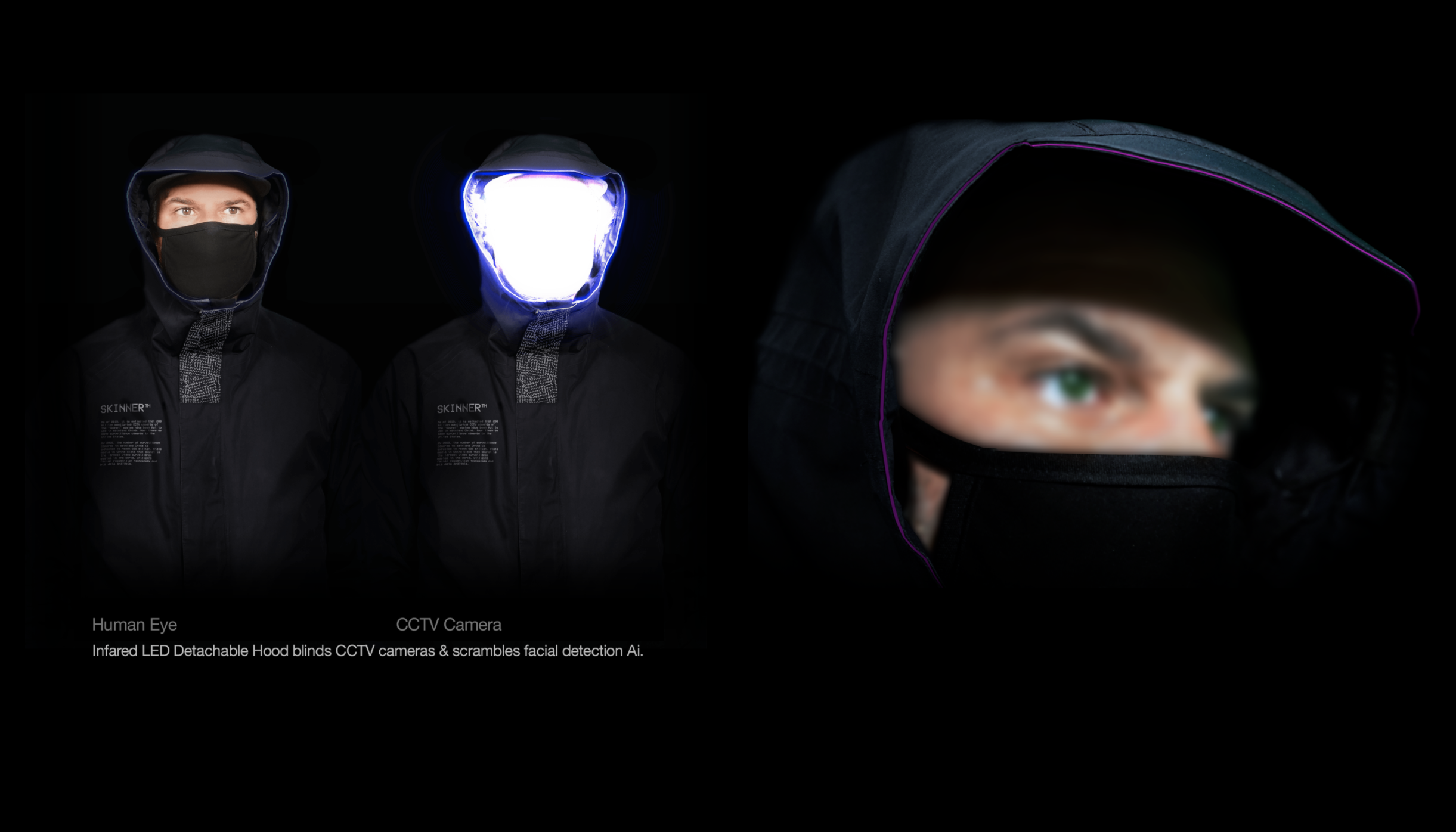
On the scale of HYBRIDITY(mix between organic and tech), where do you think your company is currently placed?
Please choose a number between 1-100; please provide 2 decimal numbers for accurate representation. There are no good or bad numbers. This number is all fluid; we will revisit it every year for you to update.
Benchmarks numbers:
1= Total organic, less tech, form first
50 = Total hybrid
100= Total tech, less organic, the function first
AW: We’re higher towards tech. I’d love to say that we’re 50-50%, the reality is probably more 80-20%, a lot more tech, a lot less organic.
We’re a lot about the function; most of what we have built are tools. We are trying hard to make SKINNER not just a functional piece, something people would want to add to their collection, but also a great tech wear jacket that just happens to have these cool features that they can talk about.
